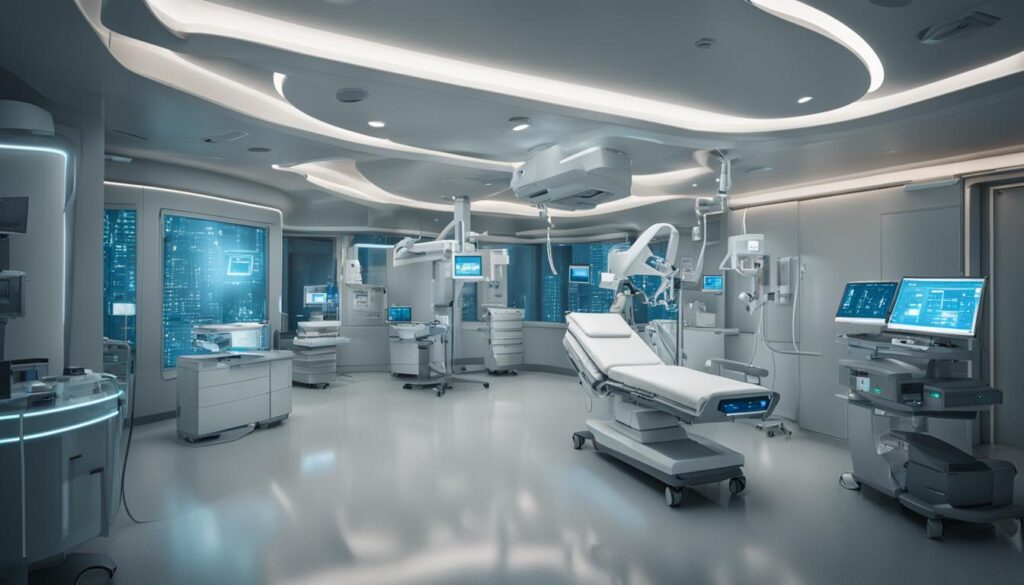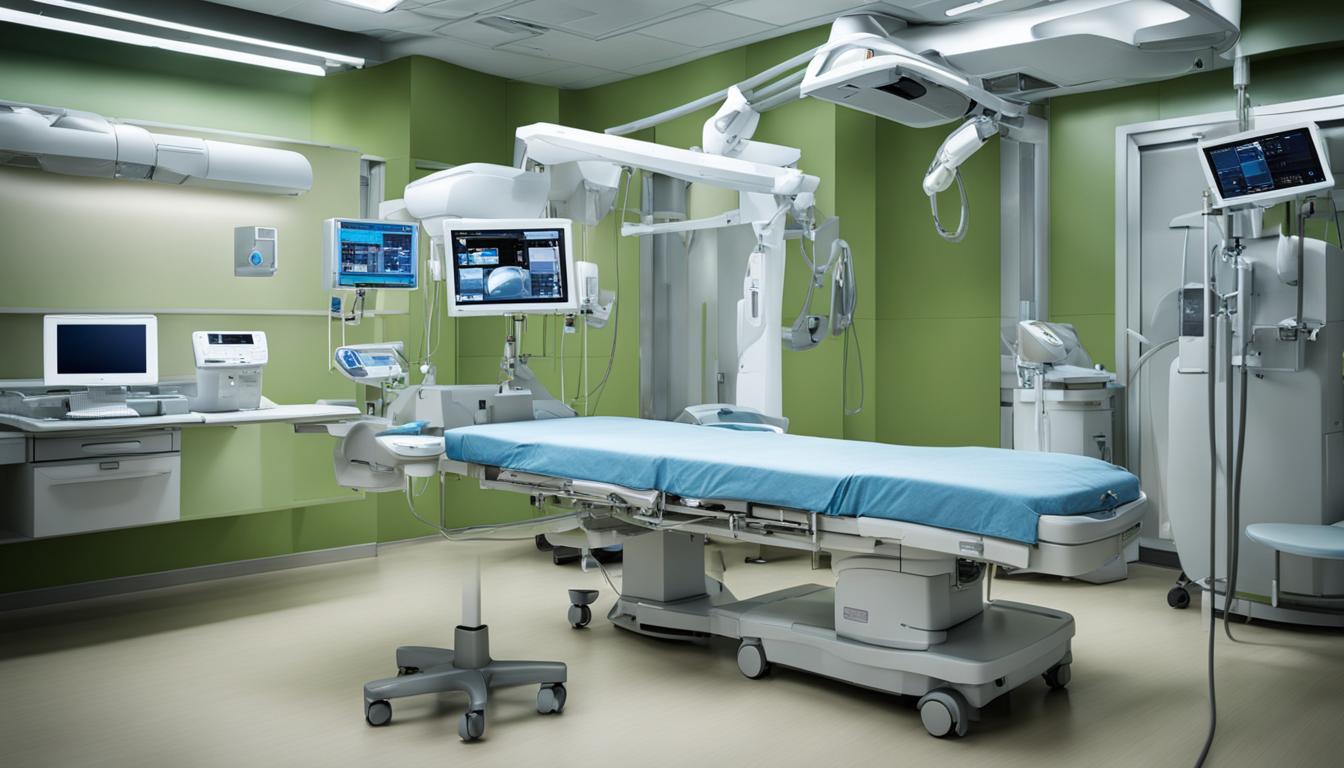Information technology has the potential to revolutionize patient safety in healthcare. By leveraging IT solutions, healthcare providers can enhance communication, improve medication safety, and ensure adherence to guidelines. Technological advancements offer a wide range of interventions to optimize patient safety and outcomes, leading to improved healthcare delivery.
Integrating IT applications into healthcare systems plays a pivotal role in addressing patient safety concerns. Health IT systems enable the collection and analysis of data, aiding in quality management and public health surveillance. However, challenges such as design, implementation, and interoperability between different IT platforms need to be overcome to harness the full benefits of technology for patient safety.
Enhancing patient safety through technology is an ongoing endeavor that requires a comprehensive understanding of the role of IT in improving healthcare outcomes. By leveraging IT solutions effectively, healthcare organizations can empower providers, engage patients, and ultimately enhance the overall safety and quality of care.
Contents
- 1 Benefits of Health Information Technology
- 2 Patient Safety Concerns With Health Information Technology
- 3 Usability and User Feedback in Health IT Systems
- 4 Conclusion
- 5 FAQ
- 5.1 How can information technology improve patient safety?
- 5.2 What are the benefits of health information technology?
- 5.3 What are the patient safety concerns associated with health information technology?
- 5.4 What are the technological advances in patient safety?
- 5.5 Why is usability important in health IT systems?
- 5.6 What is the conclusion of patient safety and information technology?
- 6 Source Links
Key Takeaways:
- Information technology has the potential to greatly improve patient safety in healthcare.
- IT solutions can optimize communication, track medication usage, and ensure adherence to guidelines.
- Health IT systems enable the collection and analysis of data for quality management and public health surveillance.
- Challenges such as design, implementation, and interoperability need to be addressed for effective use of IT in patient safety.
- By leveraging IT solutions, healthcare organizations can empower providers, engage patients, and enhance overall safety and quality of care.
Benefits of Health Information Technology
Health information technology (Health IT) offers a wide range of advantages that greatly benefit patient safety in healthcare. These advantages include improved medication safety, optimized access to guidelines, enhanced data collection for quality management, and increased patient engagement.
One of the key benefits of Health IT is the use of electronic health records (EHRs). EHRs allow for efficient storage and retrieval of patient data, improving the legibility of information and reducing the risk of medication errors. With EHRs, healthcare providers can easily access comprehensive patient information, including medication history, allergies, and previous diagnoses, ensuring safe and accurate medication administration.
Furthermore, Health IT systems provide medication safety enhancements through the use of alerts and reminders. These systems can flag potential drug interactions, allergies, or dosing errors, alerting healthcare providers to potential risks and mitigating medication errors. This proactive approach improves patient safety by ensuring that appropriate medication decisions are made.
Health IT also supports improved tracking and reporting of consultations and diagnostic testing. These systems allow healthcare providers to effectively monitor patient progress, track treatment outcomes, and facilitate timely follow-up care. Optimized access to guidelines and evidence-based medicine resources ensures that healthcare providers deliver care that aligns with current best practices, promoting patient safety and quality of care.
Patient engagement is another significant benefit of Health IT. With increased access to their medical records and improved follow-up for appointments and screenings, patients can take an active role in their healthcare. This engagement empowers patients to make informed decisions, actively participate in their treatment plans, and effectively manage their health.
Overall, the benefits of Health IT in improving patient safety are undeniable. From improved medication safety to optimized access to guidelines, these advancements contribute to better patient outcomes and the delivery of high-quality care.
Patient Safety Concerns With Health Information Technology
While health information technology (IT) offers numerous benefits, it also introduces several patient safety concerns that need to be addressed. Understanding these potential hazards is crucial for healthcare providers to optimize patient care and ensure the safe use of technology.
Top Hazards of Health IT
- Alert Fatigue: The overwhelming volume of alerts generated by health IT systems can lead to alert fatigue, where clinicians become desensitized and may ignore or override critical notifications.
- Medication Errors: Health IT systems can contribute to medication errors, both during the ordering and prescribing stages. Issues such as duplicate orders and data entry errors can compromise patient safety.
- Patient Data Privacy: Portable devices and remote access to patient data raise concerns about patient privacy and the potential for data breaches. Implementing secure measures is essential to safeguard sensitive patient information.
- Data Mismatch: Inadequate interoperability between different health IT systems can result in data mismatch or incomplete information, leading to errors in patient care.
- Impact on Medical Record Accuracy: The use of automated templates and copying notes without proper review can compromise the accuracy of medical records, potentially affecting patient care and outcomes.
Efforts to Address Patient Safety Concerns
Addressing these patient safety concerns is crucial for maximizing the benefits of health IT while minimizing potential harms. Healthcare organizations can implement the following strategies:
- Improve Alert Systems: Enhance the design and customization options for alerts to mitigate alert fatigue and ensure that critical notifications are appropriately prioritized.
- Enhance Medication Safety Measures: Implement robust medication reconciliation processes and barcode scanning systems to reduce medication errors.
- Strengthen Data Privacy: Enhance security protocols, encryption measures, and access controls to safeguard patient data on portable devices and during remote access.
- Promote Interoperability: Advocate for improved interoperability standards and data exchange protocols to ensure seamless communication and data sharing across different health IT systems.
- Optimize Medical Record Documentation: Encourage healthcare providers to review and verify automated templates and copied notes to ensure the accuracy and completeness of patient medical records.
- Mandatory Reporting and Agreement Transparency: Advocate for mandatory reporting of safety incidents related to health IT and address any contractual agreements that may hinder reporting or resolution of safety concerns.
By addressing these patient safety concerns, healthcare organizations can harness the full potential of health IT to improve patient care while ensuring the safety and security of sensitive health information.
| Hazard | Description |
|---|---|
| Alert Fatigue | The overwhelming volume of alerts can lead to clinicians ignoring or overriding critical notifications. |
| Medication Errors | Issues during ordering, prescribing, duplicate orders, and data entry errors. |
| Patient Data Privacy | Potential breaches due to portable devices and remote access to patient data. |
| Data Mismatch | Incomplete information or errors due to lack of interoperability between health IT systems. |
| Impact on Medical Record Accuracy | Automated templates and copied notes without proper review can compromise accuracy. |

| Benefits of Technological Advances in Patient Safety | Examples |
|---|---|
| Improved clinical decision-making | Real-time access to clinical guidelines and patient data |
| Minimized medication errors | Computerized patient order entry systems |
| Enhanced patient engagement | Telemedicine for remote consultations and monitoring |
Usability and User Feedback in Health IT Systems
When it comes to the successful implementation of health IT systems, usability plays a crucial role. Designing systems that are user-friendly and align with existing workflows is essential to ensure that healthcare professionals can effectively utilize these technologies without frustration or increased risk of errors. Human-factored design approaches have been employed to create intuitive and user-centric clinical decision support (CDS) tools, but integrating these tools into clinicians’ workflow remains a challenge.
One key aspect in enhancing the usability of health IT systems is gathering clinician feedback. The valuable insights provided by healthcare professionals who directly use these systems can shed light on their effectiveness and identify areas for improvement. Clinician feedback often highlights the value of CDS systems in supporting clinical decision-making but also raises concerns about integrating these tools into existing workflows. This feedback is crucial for designing systems that seamlessly fit into clinicians’ daily routines and enhance their decision-making capabilities.
However, the consolidation of electronic health record (EHR) vendors poses a potential challenge to gathering and integrating user feedback. As EHR systems merge and vendor options become more limited, the opportunities for gathering diverse perspectives on usability may decrease. In such circumstances, it becomes imperative to conduct further research and invest in innovative approaches to ensure that the human-factored design and usability of health IT systems continue to evolve and meet the needs of healthcare professionals.
Striving for usability excellence in health IT systems is essential to optimize their benefits and mitigate potential risks. By prioritizing human-factored design, continuously gathering clinician feedback, and addressing challenges in workflow integration, healthcare organizations can ensure that health IT systems enhance patient safety and contribute to better healthcare outcomes for all.
Conclusion
In conclusion, the integration of information technology (IT) in healthcare has the potential to significantly improve patient safety. The benefits of health IT systems are multifaceted, including enhanced medication safety, optimized access to guidelines, improved data collection for quality management, and increased patient engagement. However, it is important to address the patient safety concerns associated with health IT to ensure its effectiveness.
Alert fatigue, medication errors, and privacy issues are among the primary concerns in health IT systems. To mitigate these concerns, usability improvements, effective alert systems, and interoperability between different IT platforms are essential. By addressing these issues, healthcare organizations can fully harness the potential of IT to enhance patient care and improve outcomes.
Addressing patient safety concerns should be a top priority for healthcare providers. By ensuring the usability and interoperability of IT systems, healthcare organizations can optimize patient safety and quality of care. The continued advancement and implementation of health IT can revolutionize healthcare delivery, ultimately leading to safer and more effective patient outcomes.
FAQ
How can information technology improve patient safety?
Information technology can improve patient safety in healthcare by optimizing communication, tracking and reporting medication usage, enabling data collection and analysis for quality management, and enhancing patient engagement and access to medical records.
What are the benefits of health information technology?
Health information technology offers advantages such as improved medication safety, optimized access to guidelines, enhanced data collection for quality management, and increased patient engagement through improved access to medical records and follow-up care.
What are the patient safety concerns associated with health information technology?
Patient safety concerns with health information technology include alert fatigue, medication errors, patient data privacy issues, data mismatch, lack of interoperability between systems, and potential impacts on the accuracy of the medical record.
What are the technological advances in patient safety?
Technological advances in patient safety include clinical decision support tools, computerized patient order entry systems, improved usability of these systems, effectiveness of alerts and alarms, and the use of telemedicine for remote consultations and monitoring.
Why is usability important in health IT systems?
Usability is crucial in health IT systems as poorly designed interfaces and workflow integration challenges can increase the risk of errors. Clinician feedback and human-factored design approaches are vital for improving usability and user experience.
What is the conclusion of patient safety and information technology?
Information technology has the potential to significantly improve patient safety in healthcare, but it is important to address patient safety concerns, improve usability, and ensure interoperability between IT systems to fully harness its benefits.




